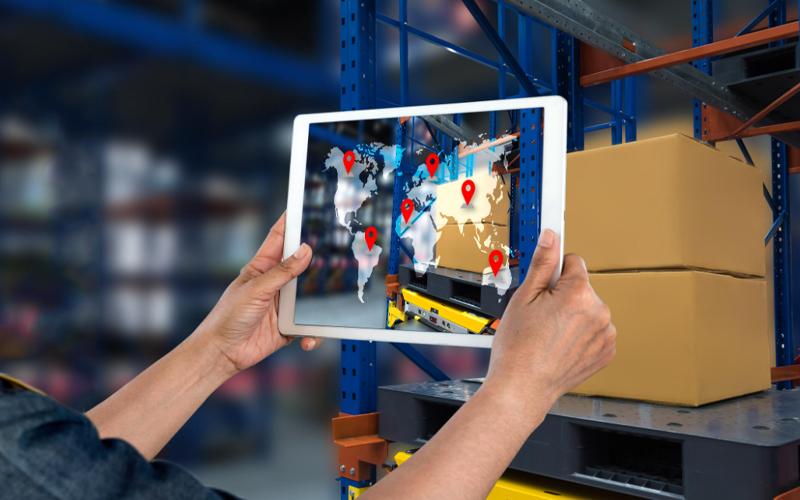Businesses have undergone a sea changes through the success of marketplaces like eBay, Amazon, Airbnb, Swiggy, and Udemy. Online marketplaces have transformed how we shop, eat, travel, and learn. Online marketplaces for retail have created an additional and lucrative sales channel for known brands and an entrepreneurial ecosystem for newcomers. The marketplace supports sellers with the infrastructure and tools for product and inventory management functions that are needed to showcase and sell their products. Optimising inventory is one of the keys to maximising profit from this channel. Excess inventory can be a significant driver of high costs, and insufficient inventory causes loss of revenue and customers.
Inventory management is about sourcing, storage, and fulfilment, and its efficiency is critical for all sellers, from big brands to mom-and-pop outfits. The basics of inventory management involve acquiring ready-to-sell products, delivering them to warehouses, storing the goods for fulfilment, and shipping the products to the customers. Product definition, categorisation, and maintaining product details start the data flow. Inventory management systems should be centralised and include barcode and RFID tagging compatibility to eliminate errors, improve accuracy, and speed up processes. The tracking of inventory should be real-time and should have the capability to trigger alerts. Alerts are automated emails or messages that warn of low stock and delay in supply or fulfilment. Integration with point-of-sale, e-commerce, warehouse, and third-party logistics business process outsourcing providers is necessary.
The latest technologies like AI, IoT, and 5G are transforming inventory management. The most significant impact has been the “smart” warehouse. IoT provides precise, real-time visibility into product status, location, and movement. Touchless and automated inventory data collection through IoT and RFID is accurate and current. IoT minimises wastage and spoilage by monitoring the required environmental settings for goods and their expiration dates. Product usage patterns can be analysed with smart shelves and are used for the optimum allocation of space in the warehouse for increased efficiency. Real-time tracking of delivery vehicle fleets using IoT and GPS prevents loss through unauthorised use and thefts and enables immediate action in case of breakdowns. Robotics and drones integrated with IoT ease the fulfilment of orders. AI algorithms use real-time data and external influencing parameters such as seasonal changes, weather forecasts, and festive season preferences to analyse patterns and provide accurate demand forecasts. These forecasts can be made at different levels, from store to country and globally. AI-enabled predictive analytics can anticipate the lead time and an optimised maintenance schedule for warehouse machines and delivery fleets. Replenishment improves with AI as, along with the forecast, multiple other factors can be included. It can adjust replenishment based on real-time updates and optimise timing, quantity, and source of inventory. AI-based merchandise allocation to warehouses balances costs, customer preferences, and market opportunities through optimisation models to provide the most favourable distribution.
When selling through online marketplaces like eBay, Amazon, and Walmart, it is necessary to integrate the seller’s inventory management system with the marketplace. The inventory updates between the seller and marketplace systems happen in real-time. Multi-channel inventory management is used in case products are sold through different marketplaces. Syncing inventory across the many channels and storage locations prevents over or under selling. It lets the seller seamlessly administer all marketplaces and online stores from one central location. Sellers can choose marketplace fulfilment services or manage through in-house or other third-party providers. If they opt for the marketplace service, then the products must be sent to the marketplace warehouse, and the marketplace then handles deliveries, returns, and customer support. Marketplaces provide tools for pricing, campaign management, and sales and customer metrics to their sellers to manage and grow their accounts.
Sophisticated inventory management with AI, RFID, IoT, robotics, and 5G is ushering in a new era for businesses. Efficient inventory management with optimised inventory levels, timely restocking, minimised spoilage and damage, and speedier deliveries is no longer a pipe dream or a herculean undertaking. AI leverages data to provide a current and accurate picture of the demand, predict potential risks and disruptions, and prescribe optimal solutions. IoT, RFID, and 5G communication enable complete and comprehensive inventory visibility across locations, leading to increased profits, lower costs, and delighted customers. Intelligent and automated inventory management has given businesses the competency to navigate the volatilities and uncertainties of today’s modern world.
*For organizations on the digital transformation journey, agility is key in responding to a rapidly changing technology and business landscape. Now more than ever, it is crucial to deliver and exceed on organizational expectations with a robust digital mindset backed by innovation. Enabling businesses to sense, learn, respond, and evolve like a living organism, will be imperative for business excellence going forward. A comprehensive, yet modular suite of services is doing exactly that. Equipping organizations with intuitive decision-making automatically at scale, actionable insights based on real-time solutions, anytime/anywhere experience, and in-depth data visibility across functions leading to hyper-productivity, Live Enterprise is building connected organizations that are innovating collaboratively for the future.








